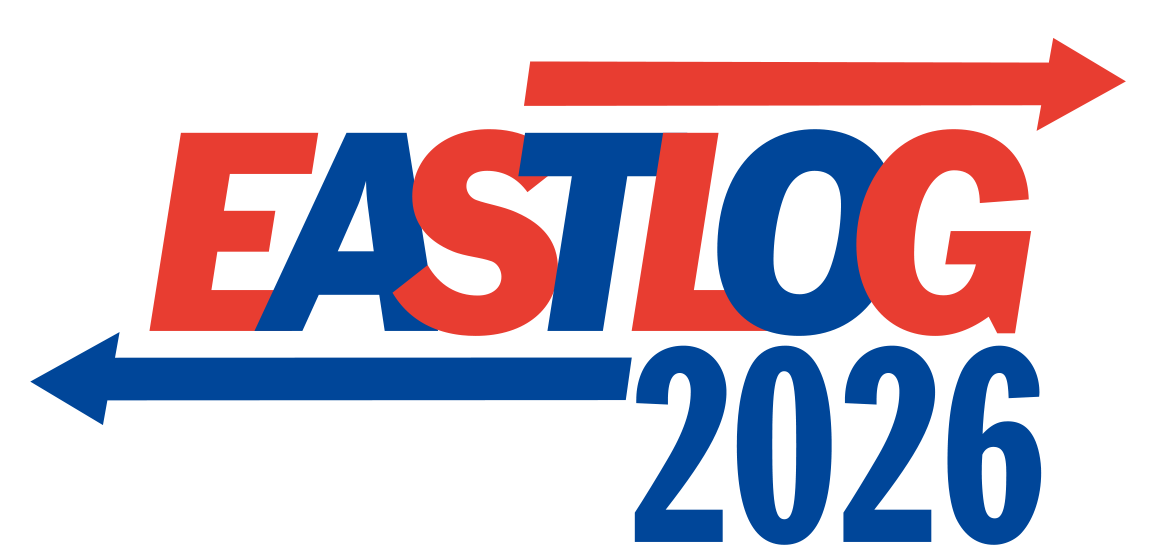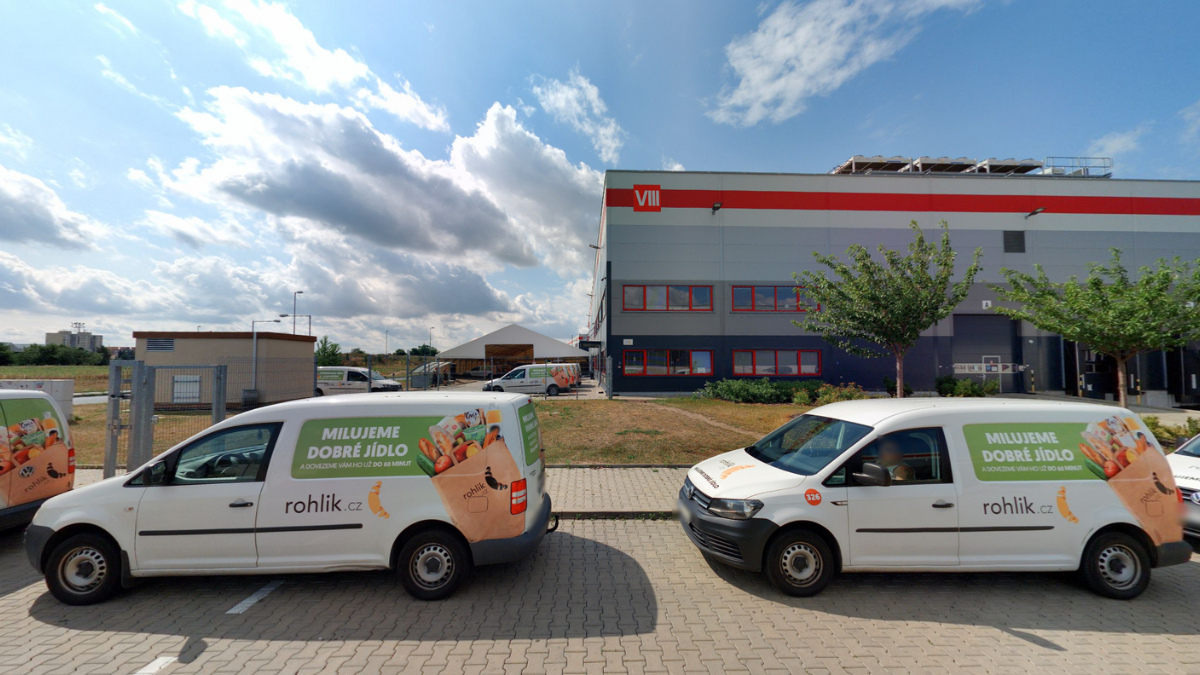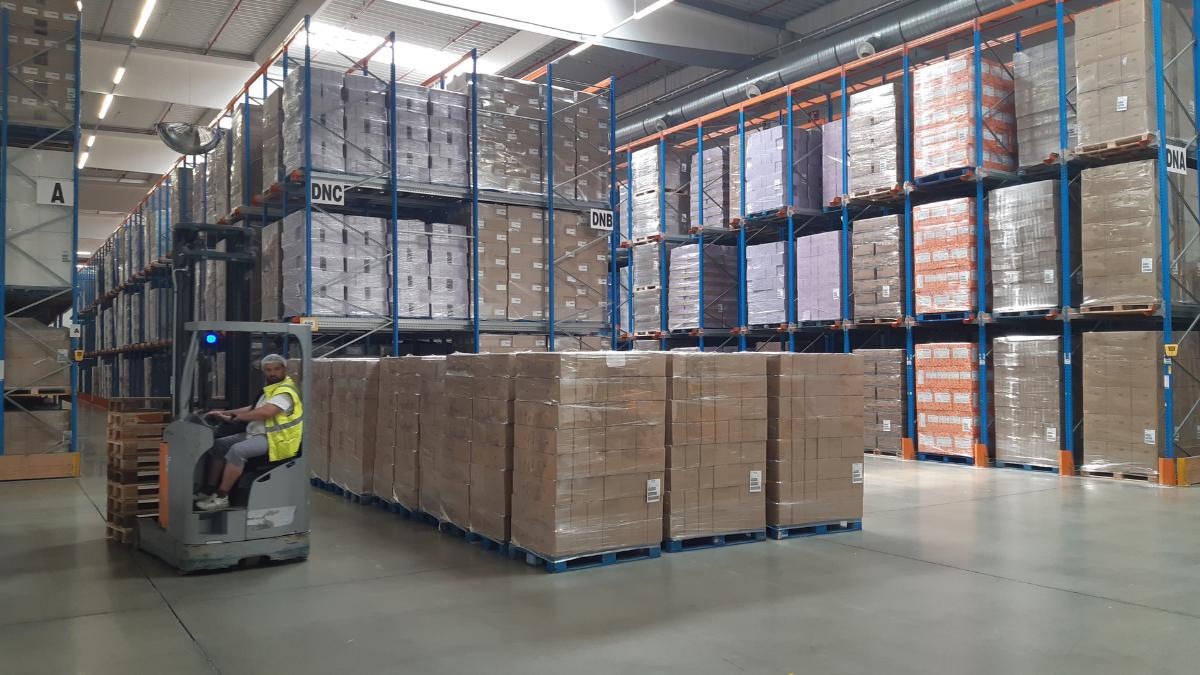Conference program
Be inspired by our dozens of speakersRegistration
Keynote presentations
Tomorrow’s logistics: the ideal combination of automation and artificial intelligence
In a world where logistics is defined by complexity and speed, the key to the future lies in the ingenious combination of artificial intelligence (AI) and automation. This keynote, based on real-world examples and practical insights, will show how AI and automation can be combined to achieve greater efficiency and adaptability. We will look at a wide range of technologies – from AI agents that dynamically control operational processes, to robotics, to computer vision that is changing the face of warehouses. We’ll focus not only on the current state of automation and the real benefits of AI, but also where the next evolution in logistics is headed.
AI in logistics: will we use AI or will AI use us?
Generative AI is no longer just a buzzword – it’s a new colleague that’s changing the game. In this talk, we’ll explore how AI can help with planning, inventory management, customer communication, or predicting delays. But also where it fails and has reserves. We will introduce tools like ChatGPT with Deep Research, Microsoft Copilot, Perplexity, NotebookLM or Eleven Labs. And we’ll look at specific real-world examples of how to use them in day-to-day logistics operations, strategies and leadership. Funny and insightful, but with a clear goal: to leave after 60 minutes with a head full of ideas and inspiration.
Morning coffee break
Panel discussion
Panel discussion: Automation – Science, magic or a well-thought-out strategy?
The world of logistics is undergoing a rapid transformation. Automation and robotics bring unprecedented opportunities but also challenges – not only in terms of investment, return on investment and technology integration, but also in terms of safety, flexibility and the human factor. Mixing the right cocktail of automation, robotics and digitalization in warehouses and supply chains is simply alchemy. The panel discussion will bring together the experiences of technology experts, warehouse technology suppliers, developers and users themselves. Together, we will try to understand the alchemy of automation – so that it not only brings greater efficiency, but also real added value for the company and its customers.
Panel discussion will be moderated by Stanislav Břeň, editor-in-chief of the magazine Logistics Systems.
Lunch & BizLOG
BizLOG speed-dating meetings
For more information: BizLOG
Afternoon sections
Afternoon section: Intralogistics
One of the afternoon blocks will focus on intra-company logistics, because it is in this area that the biggest technical and technological changes are taking place. The section will consist of a series of case studies, in which representatives of both sides of the business case will always speak. The listeners will thus get an idea of how the given innovation was implemented. The case studies will focus on topics such as automation and robotization, the digitalization of logistics processes, the reduction of energy intensity or industrial development.
Afternoon section: Transport & SCM
While the first afternoon section will focus on intralogistics, in the second we will – to put it briefly – look at what is happening outside the company. That means the topic will be transport and supply-customer chains. Both elements are very closely related, which has been particularly evident in connection with the covid-19 pandemic, Russian aggression in Ukraine or tensions in the Middle East. This program point will again be conceived as a set of short case studies that will thematically depict areas such as transport, forwarding, supply chain or inventory management.
HR roundtable
Logistics, automation and sustainability – how to bring it all together and still make money? The main topic will be ESG projects from the field, without greenwashing, without a bullpen of reporting, and without the sauce. ESG can be an opportunity to transform logistics and automation towards sustainability, business efficiency and greater resilience. The workshop will take the form of a roundtable around which ESG experts will sit. Brief presentations will be made during the course, which will be used to develop a discussion among the experts present.
ESG roundtable
Logistics, automation and sustainability – how to bring it all together and still make money? The main topic will be ESG projects from the field, without greenwashing, without a bullpen of reporting, and without the sauce. ESG can be an opportunity to transform logistics and automation towards sustainability, business efficiency and greater resilience. The workshop will take the form of a roundtable around which ESG experts will sit. Brief presentations will be made during the course, which will be used to develop a discussion among the experts present.
Panel discussion
Afternoon coffee break
Keynote presentations
New work rules: a place for people or machines
Artificial intelligence is no longer the stuff of science fiction – it’s infiltrating companies, offices and factories and transforming the labour market in real time. What does this mean for human work? Will some professions disappear altogether? Who will have to look for a new direction and who will gain new opportunities? This presentation will focus on the concrete impacts of AI across sectors – from administration to manufacturing to logistics, where machines are increasingly replacing humans not only in physical work but also in planning. We will show that it’s not just about technology, but also about ethical issues and the need for rapid adaptation. AI is not just a tool – it is a force that can fundamentally change the rules of the game. And the question is not if, but when.
Welcome to the 18th century
Adam Smith’s magnum opus, The Wealth of Nations, turns 250 next year. With little pause, we have cheered on for half a century and a third in breaking down the barriers to global trade. The world was getting smaller and we were getting richer. Are we now experiencing a small pause, or have we bounced from the Fukuyama end of history back to the 18th century? And can we put a price tag on it all?
Afternoon section
Panel discussion: the economy in motion – how are geopolitics and markets changing supply chains?
Supply chains are going through a turbulent period. Pressure to relocate production is growing, trade barriers are becoming the new normal and geopolitical factors are increasingly affecting logistics. Companies are rethinking strategies – seeking a balance between cost, raw material availability and security of supply, and sustainable growth. What factors are determining the direction of global and local supply chains? Are we witnessing a new balance of power in trade and manufacturing? Is the era of globalisation coming to an end? What are the realities of nearshoring and friendshoring? Why are trade barriers and tariffs rising? What determines the relocation of production? How are changes in consumer behaviour affecting firms’ production and logistics strategies? What is the prevailing sentiment among managers? What does the world economy expect in the coming years and how should the logistics sector prepare for it? The discussion will bring together the perspectives of economists, supply chain experts and company managers who are experiencing these changes on the ground.
The panel discussion will be moderated by Zuzana Hodková, reporter of SZ Byznys.
Evening program
LOGISTICS BUSINESS MIXER
For more information: Logistics Business Mixer
Logistics from the farm or Controlled warehouse for Maso-Profit
The supply of technology, supplies and ingredients to the food industry has its own logistical specificities. In 2018, the family-owned company Maso-Profit decided to build an automated mini-warehouse in an old farmhouse in Hrdlořezie. The machine was put into live operation in 2020 and at that time it was the first installation of a Jungheinrich STC2B1A automatic stacker in the Czech Republic. The automatic stacker, which the company quickly came to call Robot Emil, allows employees to operate an entire warehouse with 2,500 crates and more than 10,000 types of goods. The modern intralogistics system also coped with the building’s original gabled roof and made it possible to use hard-to-reach areas. However, it soon became clear that the further development of intralogistics was complicated by the two-decade-old information system. And here begins the next chapter in the story of optimising logistics flows. Maso-Profit started to write it together with K2 atmitec.
Optimisation of logistics and warehouse management with a payback period of six months
The case study deals with the optimization of warehouse management in Plant Simulation – Digital Factory. The main objective was to solve the problem of pallet overload in the receiving area and to propose an efficient alternative to the planned construction of a new hall. Instead of expanding the existing infrastructure, the focus was on designing an automated warehouse with optimized material flow. The study evaluates the capacity and efficiency of this solution in relation to the expected requirements of the project. The results show that the proposed system can ensure smooth operation and adequate storage capacity, thus providing the customer with a more efficient and sustainable solution for future development. The cost savings amount to hundreds of thousands of euros at one time and tens of thousands of euros each year thereafter. The project’s return on capital expenditure (Capex) was less than six months.
Components are transported between production and packaging at Clarios Plastics by automatic machines
The company Clarios Plastics Czech, based in Česká Lípa, is a major manufacturer of plastic components for car batteries, such as boxes, lids, covers and other parts. With a production capacity of 80 million units per year and a team of 170 employees, it is one of the key players in this segment. Clarios also has a plant in Česká Lípa for the production of car batteries. To increase efficiency and in response to the growing demand for batteries, Clarios Plastics Czech has invested in automating pallet handling between the production facilities and the packaging line. Initially, approximately 100 pallet positions were manually operated by forklifts. By automating this process using TMHCZ’s Autopilot technology, a more efficient flow of material was achieved without the need to increase the number of operators. The removal of manually guided forklifts from the production and logistics operations also improved operational safety.
Warehouse on the move: A comprehensive solution for Tchibo’s distribution centre
Together with its customer, Tchibo, Dematic will present a tailor-made solution for the distribution centre in Cheb. This is an installation that is characterised by its high complexity. At the heart of the DC is the pouch system, a hanging bag system from Dematic. It is ingeniously connected to other hardware and software parts of the warehouse, including 110 packing points, 50,000 pallet positions and shuttles.
K&V Elektro has a robotic warehouse following the example of global players in e-commerce
Petr Smíšek, Director of the Distribution Centre of K&V Elektro, and Josef Piska, Marketing Manager of Vertiflex, will present a warehouse robotization project using an advanced shelf-to-person solution from Geek+. Thanks to the autonomous P800 robots, K&V Elektro has been able to increase the speed, accuracy and flexibility of warehouse operations. In the second phase of the project, the implementation of the VertiNode control system played a key role, taking logistics processes to a new level. Key benefits include intelligent item storage strategies, efficient picking management and an advanced algorithm for prioritising individual orders. The entire solution is fully scalable – from smaller warehouse operations to logistics centers comparable to the largest global e-commerce players. Thus, a robotic warehouse can grow with the growth of the company.
Panel discussion: How to successfully automate intralogistics?
What are the main challenges of automation projects and what lessons can we learn from them? The panel discussion following the Intralogistics section will focus on sharing experiences with the implementation of advanced technologies in warehouses and manufacturing plants. Panelists from both suppliers and users of intralogistics solutions will share their insights from specific projects. How did they deal with the obstacles? How have they managed to align new warehouse technologies with existing processes and how have their logistics changed? They will discuss the return on investment and what strategies lead to seamless employee adoption of innovation.
The panel discussion will be moderated by Patricia Jakešová, a consultant in the field of retail, logistics and automation.
Recruitment without pain: How OK Trans recruited 13 drivers and mechanics in two months
There is a shortage of over 15,000 truck drivers in the Czech Republic and those who remain are getting older. Transport operators need new professionals without a long wait. Traditional recruitment methods are no longer effective. How to recruit differently? In this short but information-packed talk show, you’ll learn how artificial intelligence and smart automation can make driver recruitment significantly faster and cheaper. Michal Mikulášek, founder of Prodator, interviews Jiří Šiška from OK Trans, who manages a team in five branches and oversees a fleet of hundreds of trucks. Together, they will reveal why they decided to use voicebots, what has worked well for them and why external recruitment is now more profitable than building expensive in-house HR teams. You’ll learn concrete data, real-life experiences, and the reasons why we need to change the way we look at the future of recruiting, not just drivers.
From roads to rails – Intermodal transport in practice
Mondi Štětí, the largest paper mill in the Czech Republic, produces pulp and paper for packaging solutions, which it exports to 80 countries. It employs nearly 1,000 people and has recently completed an investment in a new paper machine, bringing it closer to its target of one million tonnes of products per year. As part of its efforts to make transport more environmentally friendly, it is working with LKW WALTERto expand intermodal transport, which combines road and rail transport. This ensures a more efficient and sustainable distribution of products across Europe, reducing the carbon footprint and increasing delivery reliability. The collaboration demonstrates how long-term partnerships and advanced logistics solutions can help protect the environment and strengthen the sustainable development of the industry.
Focus on greater efficiency
Česká zbrojovka, part of the Colt CZ Group, one of the world’s leading firearms manufacturers, has decided to optimise its logistics processes using the Time Slot Control cloud application. The goal was to eliminate bottlenecks in receiving and shipping, minimize downtime and spread out the work of warehouse operators and carriers. Thanks to the deployment of the booking system, the carriers deliver the vehicles at predetermined times, which reduces operating costs – from shift optimization to savings on the use of handling equipment and labor costs. Uncertainty in the supply of materials and the dispatch of finished products also decreases. Centralised records of vehicles entering the company’s premises increase security, visibility for all users involved and eliminate unnecessary email and telephone communication, and allow reporting on the utilisation of key resources and records of returnable packaging circulating between suppliers and the company itself. What other impacts has this change had on Česká zbrojovka’s operations?
Automation at Lenzing Biocel Paskov simplified the administratively demanding entrance management
Lenzing Biocel Paskov, a company that produces viscose pulp, has decided to modernise its entry system by implementing the Welcomo self-service kiosk. A key element was the interconnection of the self-service kiosks with external systems (Cominfo access control system, SAP and cameras for reading RZs). The integration made the processes faster and simpler, replacing the administratively demanding entrance management. The solution was tailored to the specific needs of Lenzing Biocel Paskov, with the main objective of increasing efficiency and convenience for all parties involved. The result is smoother operation, increased safety and reduced operating costs. The case study shows how digitalization can take logistics operations to a new level and bring tangible benefits in practice.
What regulations will affect freight transport?
What trends are already evident today? Which regulatory instruments are already in the implementation phase and where can we expect a delay? What to prepare for? One thing is certain: decarbonisation will continue to be the main driver of the transformation. We will therefore look at what tools will be used to do this in the transport sector – EU ETS2 emission allowances, CountEmissonsEU, but also the impact of the EU taxonomy and corporate sustainability reporting (ESG reporting). We will look at what plans are in place to support rail and combined transport and how infrastructure for alternative fuels in road transport will be supported. We will also cover the important topic of automation – when will automated vehicles be able to drive on our roads? To complete the mosaic, we will also add the area of digitisation, specifically through electronic freight transport information (eFTI).
Panel discussion: The digital revolution in transport
Digitisation and automation are transforming the way freight transport is managed. How are companies adapting to new technologies and which innovations are bringing the greatest benefits? Are there barriers to the adoption of digitalisation and how to overcome them? The panel discussion following the Transport section will focus on practical experiences with the implementation of digital solutions. Experts and representatives of companies already using these systems will share their insights on how technology helps to reduce costs, optimise routes, increase transport efficiency and reduce environmental impact.
The panel discussion will be moderated by Tatiana Koššová, country manager SK of ATOZ Group.
HR ROUNDTABLE
HR ROUNDTABLE
The HR Roundtable at this year’s EASTLOG will open several current topics that fundamentally affect people management in logistics, manufacturing and retail. First, we’ll look at the current state of the job market – what the hard data says, what the current trends are, and how employers and employees perceive them. Next, we’ll look at how the warehouse environment and scheduling itself can impact employee retention and satisfaction. The topic of company culture – as a key factor in a time of change, uncertainty and pressure on performance – will also get space. Finally, we’ll take a peek into the world of modern technology and artificial intelligence – specifically how AI can help HR teams manage recruitment at scale and respond to business needs in real time. The discussion will not only offer facts and concrete examples from practice, but also the opportunity to share experiences across companies and roles. The roundtable will create a space for inspiration and practical insights that you can immediately apply to your organisation.
Moderator: Roman Molek, managing partner of Transearch International.
During the workshop you will hear these short presentations, which will serve as a springboard for discussions in which you can actively participate:
- Roman Molek, Managing Partner of Transearch International, will talk about situations and trends in the Czech labour market.
- Roland Krybus, senior consultant at Miebach Consulting, will explain why are people leaving us? How smart warehouse planning can help retain our employees.
- Miloslav Fránek will talk about implementing a new corporate culture in a manufacturing company.
- Michal Harásek co-founder of Tymbe will explain why AI takes work but makes sense.
ESG ROUNDTABLE
ESG ROUNDTABLE
ESG That Makes Sense – And Saves Costs
Logistics, automation and sustainability – how to bring it all together and still make money? Come to the roundtable sponsored by Change for the Better at this year’s EASTLOG 2025 conference. We’ll talk about ESG projects practically, without greenwashing, without the reporting lily pad, and without the gravy.
The session will feature key players presenting real-world solutions. Take part in the discussion, share your insights and concerns. There will be space for questions and networking. We’ll show that ESG can be an opportunity to transform logistics and automation towards greater sustainability, business efficiency, and resilience.
Come for real ESG – the kind that actually works for companies.
Moderator: Jenda Perla, executive director of Změna k lepšímu.
During the workshop, you will hear these short presentations that will serve as a springboard for discussions in which you can actively participate:
- Marek Fedor from CHEP CZ will present a case study of cooperation with TAMDA FOODS – Advantages of pooling model in daily logistics operation.
- Vojtěch Rosina, country manager at Avery Dennison, will speak on ESG in a global company without clichés.
- Katarzyna Kiwalska ESG Manager at Rohlik Group.
- Pavel Záleský from Impact Metrics, will speak on ESG as a strategic advantage, not bureaucracy.
- Marek Fedor from CHEP CZ will present a case study of cooperation with TAMDA FOODS – Advantages of pooling model in daily logistics operation.
- Michal Gotěk business development manager ze společnosti DHL Express.
- Gabriela Povýšilová ESG manager at CTP.
SEELOG
Logistics and distribution centre at Raben Logistics Czech headquarters in Nupaki (Prague – East)
The company headquarters covers an area of 27.000,- m2. It has a warehouse area of over 20,000 m2, of which 4,700 m2 offers the possibility of tempered storage and transport in a temperature regime from 2 °C to 30 °C according to the client’s requirements. The warehouses are equipped with LED lighting, intelligent HVAC or sprinkler system according to NFPA standard. These facilities are connected to a stand-alone cross-dock of over 5,000 m2 where goods are unloaded, consolidated, sorted and reloaded for further distribution. The logistics centre is located in CTPark Prague East and also includes offices and its own car park. The headquarters building in Nupaki provides space for photovoltaics operated by CTP in cooperation with ČEZ ESCO, which Raben Logistics Czech joined in 2024. This plant covers 48% of the annual electricity consumption.
Visit Information:
- Number of visitors: 40
- The group will be led by an expert guide, the interpretation will be in Czech.
- Sturdy shoes and reflective vest are recommended.
- Own transport, parking in the parking house on the company premises.
- Meeting at 9:30 a.m. in front of the administration building.
The excursion will be led by Michal Knotek, regional contract logistics manager at Raben Logistics Czech.
Distribution Centre Rohlik.cz – Horní Počernice
The modern Rohlik.cz distribution centre in Horní Počernice covers an area of 11,700 m² and is the heart of the logistics operation for the capital city and its surroundings. On peak days, the warehouse is capable of handling up to 12,000 orders per day in a 20-hour operation. Visitors get a glimpse of the complete operation – from receiving goods, to consolidating orders and shipping them to customers. The tour also includes a demonstration of two AutoStore warehouse systems of 1,125 m² and 500 m², which contribute significantly to the automation of the operation. Participants will thus experience in real time the operation of a modern fulfillment center where technology, efficiency and precise logistics processes are combined.
Visit Information:
- The tour will take place in two groups, each with a maximum of 10 people.
- Each group will be guided by an expert guide, and the interpretation will be in Czech.
- Sturdy safety shoes are recommended; if needed, they will be available for rent.
- Reflective vests will be provided on site.
- No special equipment is required, but we recommend wearing comfortable clothing.
- Please use your own transport and arrive at the venue at least 10 minutes before the start time.
The tour will be led by Michael Nemec, group automation manager at Rohlik Group.
Drylock Technologies production and logistics plant in Hrádek nad Nisou
Visitors will see Drylock Technologies’ main plant, which accounts for approximately 60% of the group’s total turnover and production. The operation is the company’s flagship and showcase – offering state-of-the-art manufacturing and logistics facilities and technology. The factory was built in 2012 as a greenfield project in cooperation with the development company VGP. Within ten years, it has grown to a built-up area of 118,000 m². As a result, the plant in Hrádek nad Nisou has become the largest diaper manufacturer in Europe and ranks among the five largest in the world. One of the interesting features is the connection of the production and warehouse halls through a tunnel that runs under the 1st class road towards Poland. The production part of the plant comprises 27 high-speed lines, which can produce up to 1,000 pieces per minute. The Hrádec plant covers the complete product portfolio – from baby diapers to adult incontinence aids. In the intralogistics area, visitors will see various types of shelving systems and one fully automated high-bay warehouse. The primary focus is on high-density storage – the Hrádek plant handles more than 80,000 cargo units (pallet 1200 × 800 × 2400 mm), with a further 50,000 units in external warehouses. On average, 150 outbound and 70 inbound trucks are handled daily. The smooth flow of loading and unloading is ensured by an automatic navigation system with recognition of registration marks, linked to a reservation system for the scheduling of manipulations.
Visit Details:
- Closed-toe shoes (sneakers, etc., are acceptable).
- Minimal jewellery – before entering the production and warehouse areas, all jewellery, watches, etc., must be removed.
- Visitors will be provided with a hair net and a reflective vest directly at the facility.
- Exact location of the tour (for arrival by car): Drylock Technologies, Vlámská 801, 463 34 Hrádek nad Nisou. Parking is available at Hall B1 (lower gatehouse), followed by registration at the gate.
The excursion will be led by Daniel Korec, Logistics Project Specialist at Drylock Technologies.
Kaufland distribution centre in Olomouc
Kaufland Logistik Olomouc Distribution Centre started its operation in 2006 and covers an area of 311,129 m2, of which the warehouse area is 98,447 m2. During one day we are able to stock an average of 280,000 cartons, which go to the 67 branches that fall under the distribution centre. Visitors will see the complete operation from goods receipt to picking, especially the automatic picking warehouse and automatic pallet stacker, which will be newly launched in 2022.
Visit Information:
- Closed-toe footwear.
- Warmer clothing recommended, we will also visit the deep-frozen and chilled warehouse.
- The group will be guided by a professional escort, the interpretation will be in Czech.
- Own transport (Kaufland Logistik Olomouc, Týnecká 65, Olomouc), parking possible in the car par.
The tour will be led by Petr Beníček, transport and logistics manager in the distribution centre of Kaufland Česká republika.
Tchibo distribution centre in Cheb
The logistics centre, which DHL took over from the previous provider in 2020, handles logistics for customer Tchibo. It represents one of the most important distribution hubs for e-commerce in Central Europe. The warehouse focuses on B2C logistics and its main tasks are the delivery of orders to consumers and stores, reverse logistics, product rework and complex inventory management. The operation is overseen by a customer-specific WMS system, Inconso, which is connected to DHL’s in-house Smart Productivity platform. It handles up to 80,000 orders per day, with a record of 89,415. Capacity for reverse logistics is 250,000 items per day, and for rework 70,000 items. The operation covers an area of 91,000 m², with a total usable area of up to 117,500 m² including mezzanines. The centre is divided into eleven warehouse sections and has 83 loading doors and seven access gates. There are also 150 swap points and 100 truck spaces for cargo handling. The logistics centre is equipped with an extensive storage infrastructure – from 47,000 pallet and 52,000 “carton” positions, 176,000 positions in the Dematic Multi Shuttle system to 300,000 bags in the automated Dematic pouch system. 68 forklifts, including 18 VNAs and four yard handling tractors, assist with material handling. Around 60,000 product items – from general merchandise to seasonal mixes – are normally in active stock. Operations are operated on a three-shift basis, with a logistics team of approximately 1,200 people in operational positions (60% core staff, 40% agency staff). Administration and process management are handled by a further 180 employees, while a team of 80 people is responsible for technical support and solving operational challenges. An interesting feature is the application of the so-called campus model, which allows the operational use of up to 2,000 people from the wider environment.
Visit Information:
- Special equipment for the excursion is not necessary – vests will be provided, sturdy boots an advantage.
- The group will be guided by an expert guide, the interpretation will be in Czech.
The excursion will be led by Radek Mička, operations manager of DHL.





































































